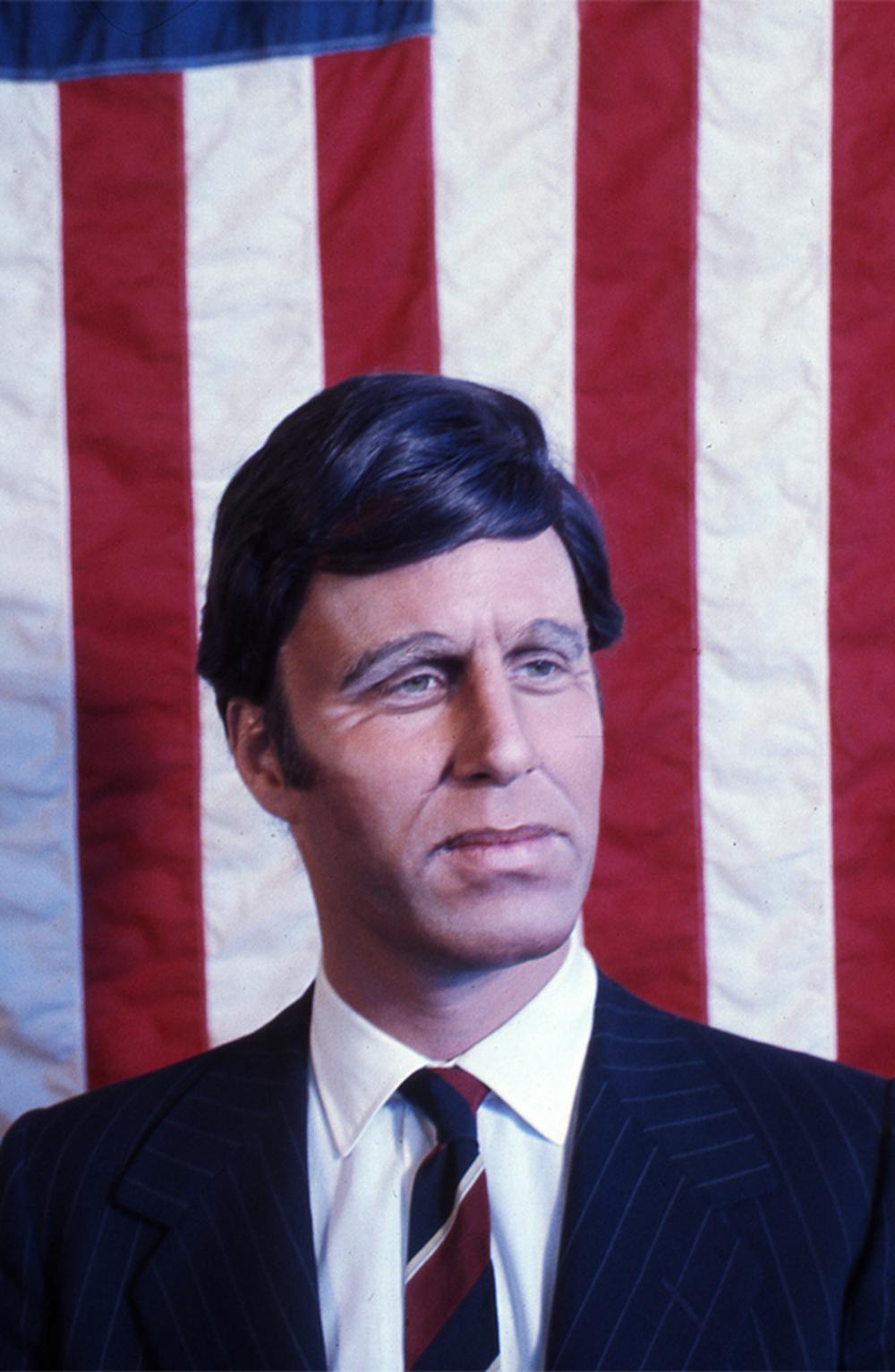Doug Hall. The Artist-President

Energized by the radical social movements of the 1960s, Doug Hall’s early performance and video work adhered to a utopian ideal of decentralized and democratic mediamaking made possible by access to recently introduced equipment like portable video cameras: “If we could claim the tools, we could influence the discourse.”1 T. R. Uthco—Hall’s art collective with Jody Procter and Diane Hall—staged media events like Media Burn (1975) and The Eternal Frame (1975) with another prominent media art and performance collective known as Ant Farm. Both of these taped events featured Hall’s impersonation as Artist-President—who over time was modeled more explicitly as John F. Kennedy—delivering a speech after a 1959 Cadillac crashed through a wall of flaming televisions in Media Burn and reenacting the 1963 assassination at Dealey Plaza in Dallas for The Eternal Frame. The character offered a critical examination of the power of the presidential image. As the artist stated, “the thing that astounded us was that people took the image to be meaningful, crying and having deep emotional reactions.”2
Doug Hall, in Kill Your TV: How Bay Area Video Art Exploded in the 1970s, 2015, produced by San Francisco Museum of Art and KQED on the occasion of the exhibition The Terrible Uncertainty of the Thing Described at the San Francisco Art Institute, video, 8:57 minutes, available at sfmoma.org/watch/kill-your-tv-how-bay-area-video-art-exploded-in-the-1970s. ↩︎
Doug Hall, in Meredith Tromble, “The Contradictions of Power,” in Flintridge Foundation Awards for Visual Artists 1999/2000 (Pasadena, CA: The Foundation, 2000), 17. ↩︎